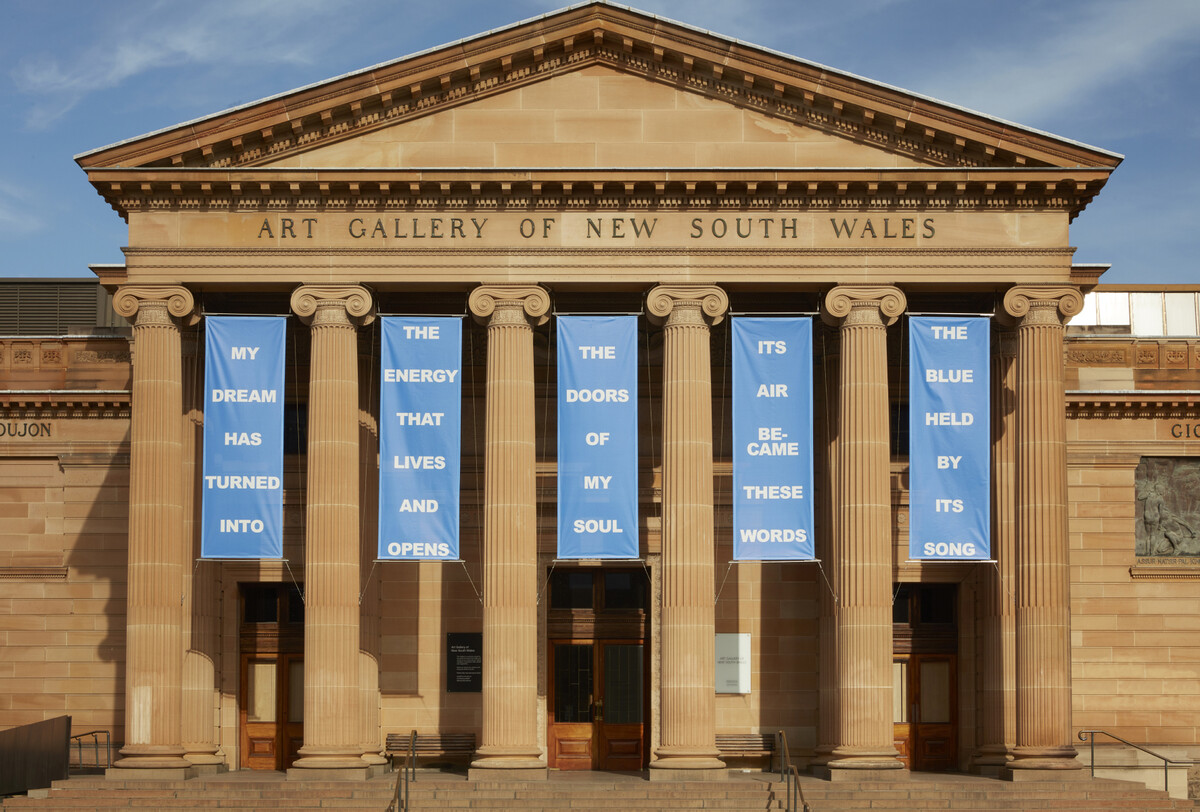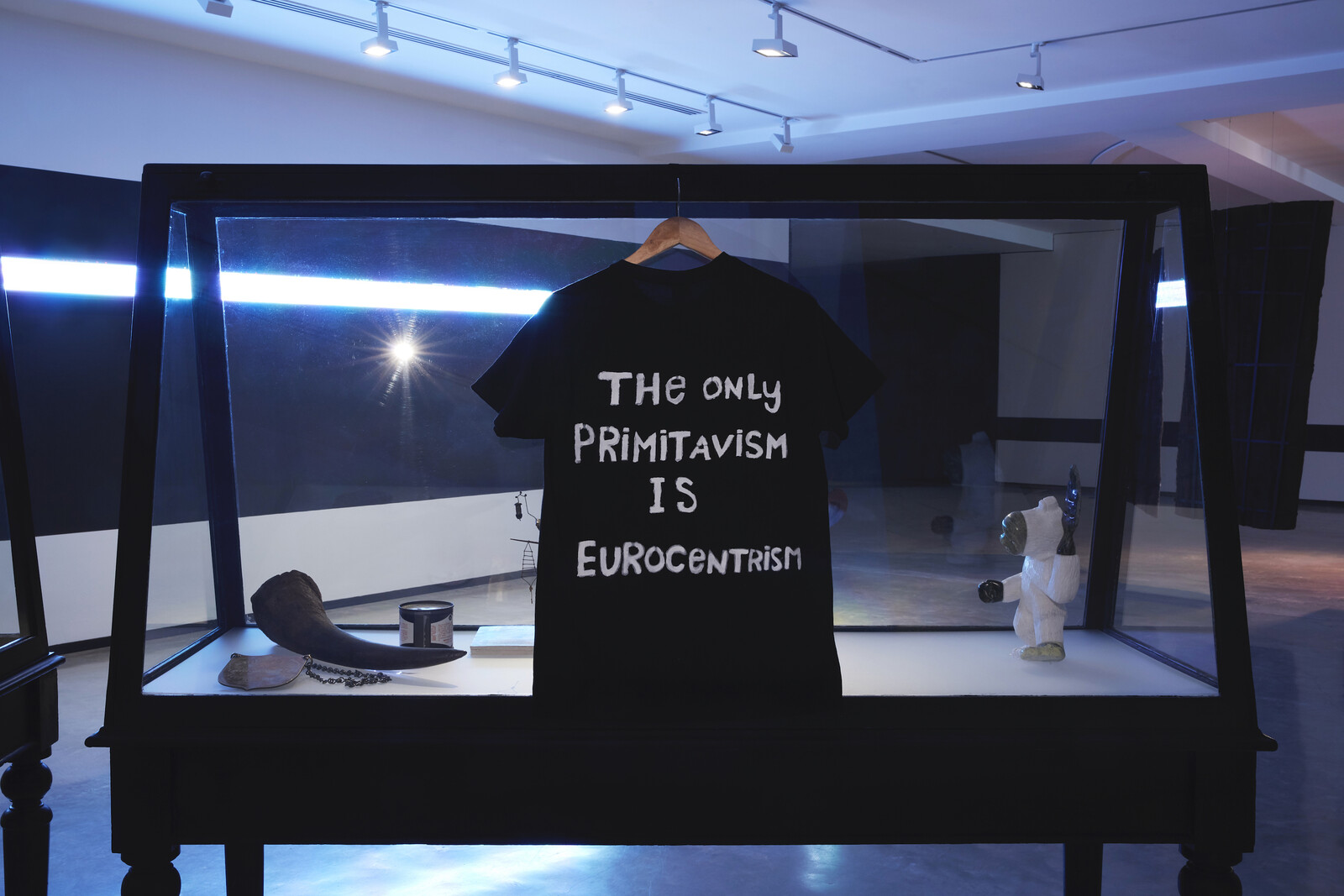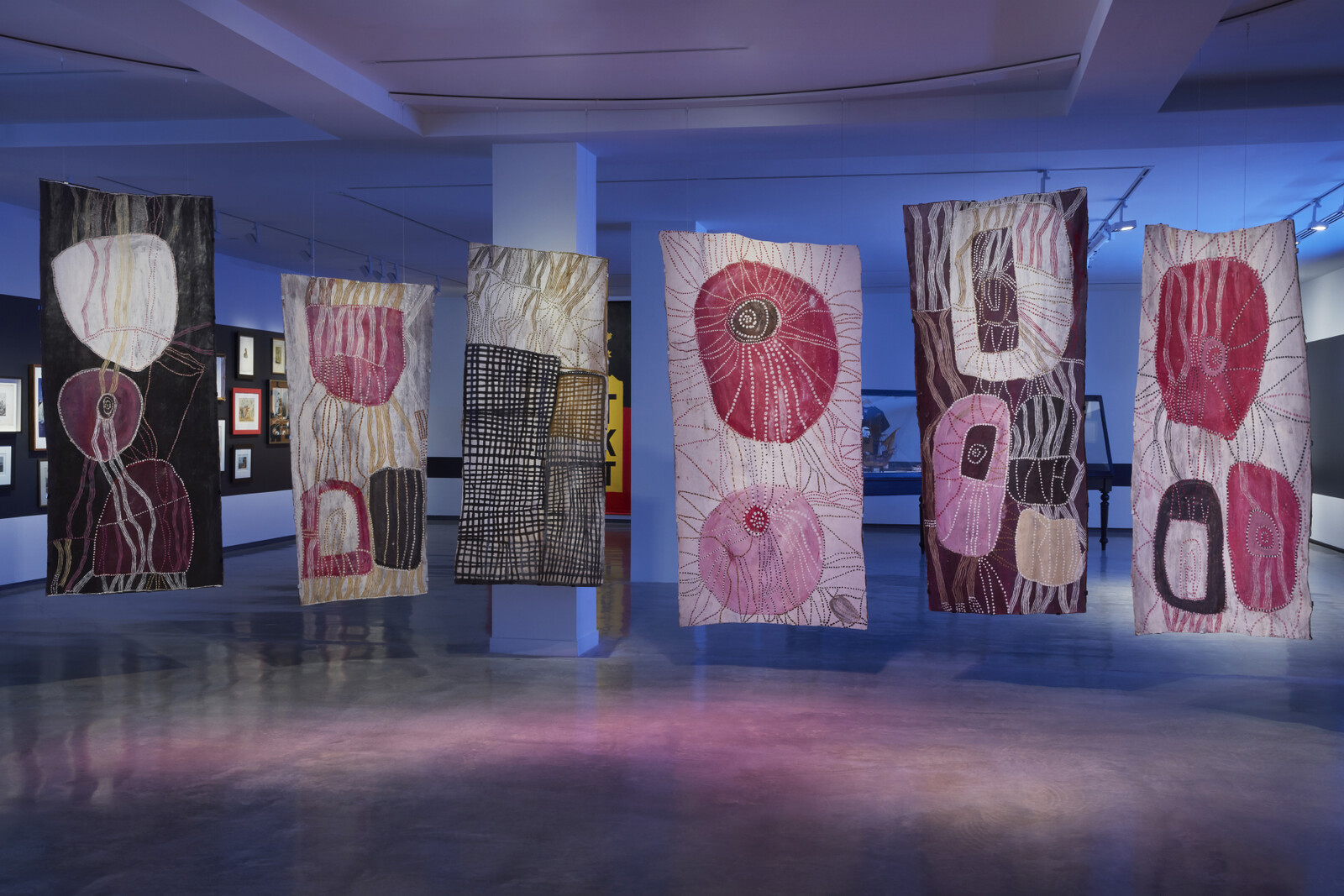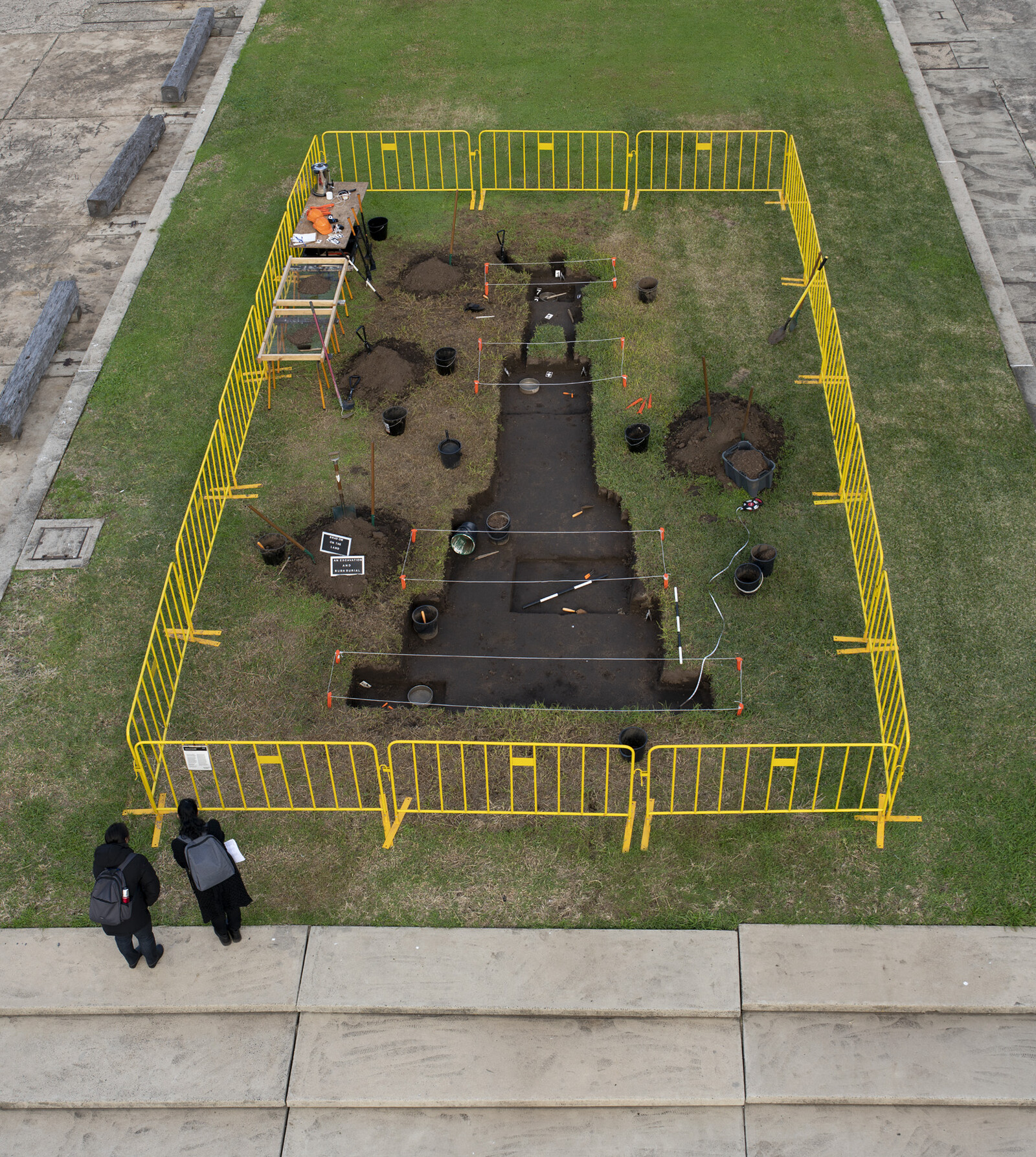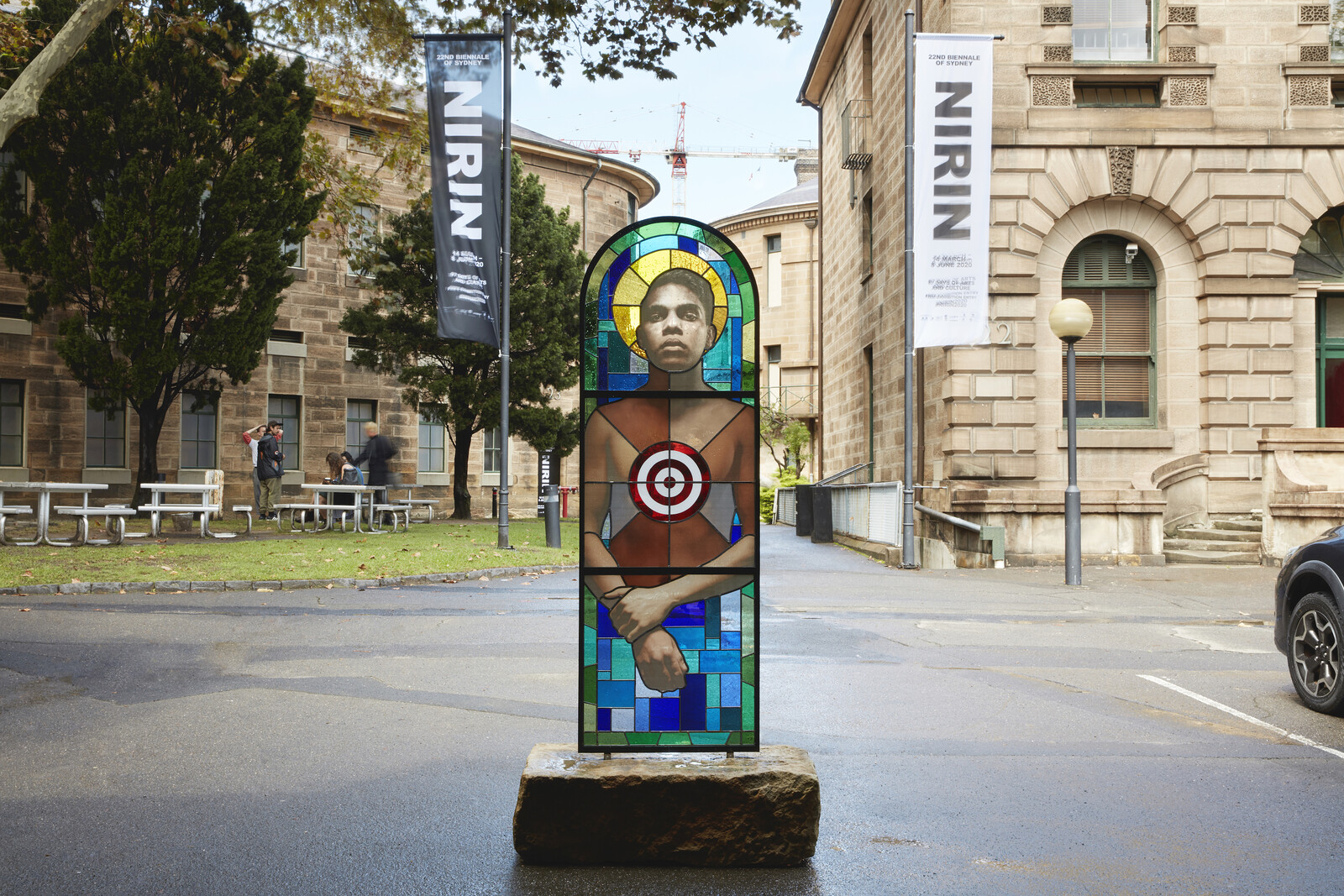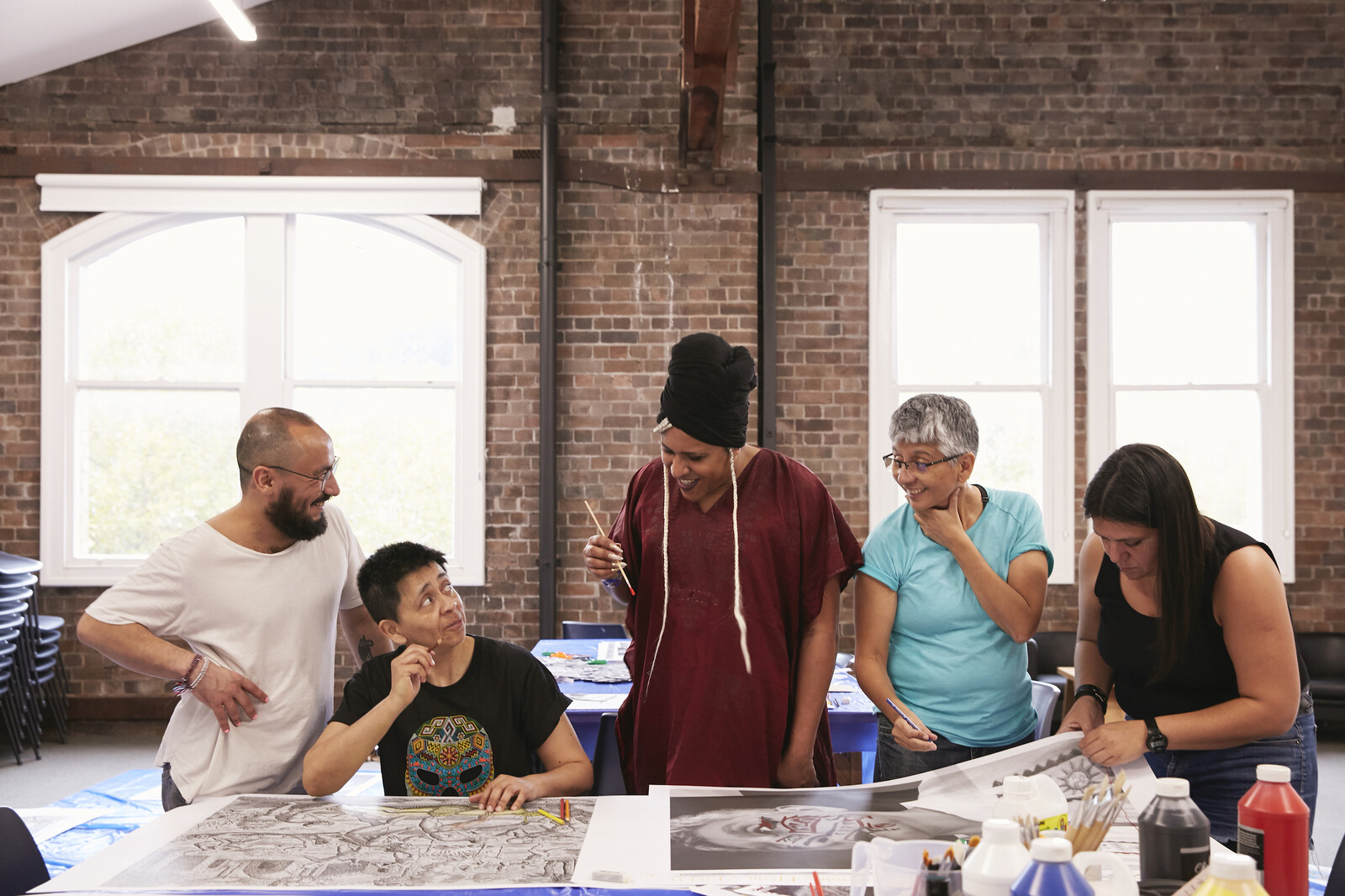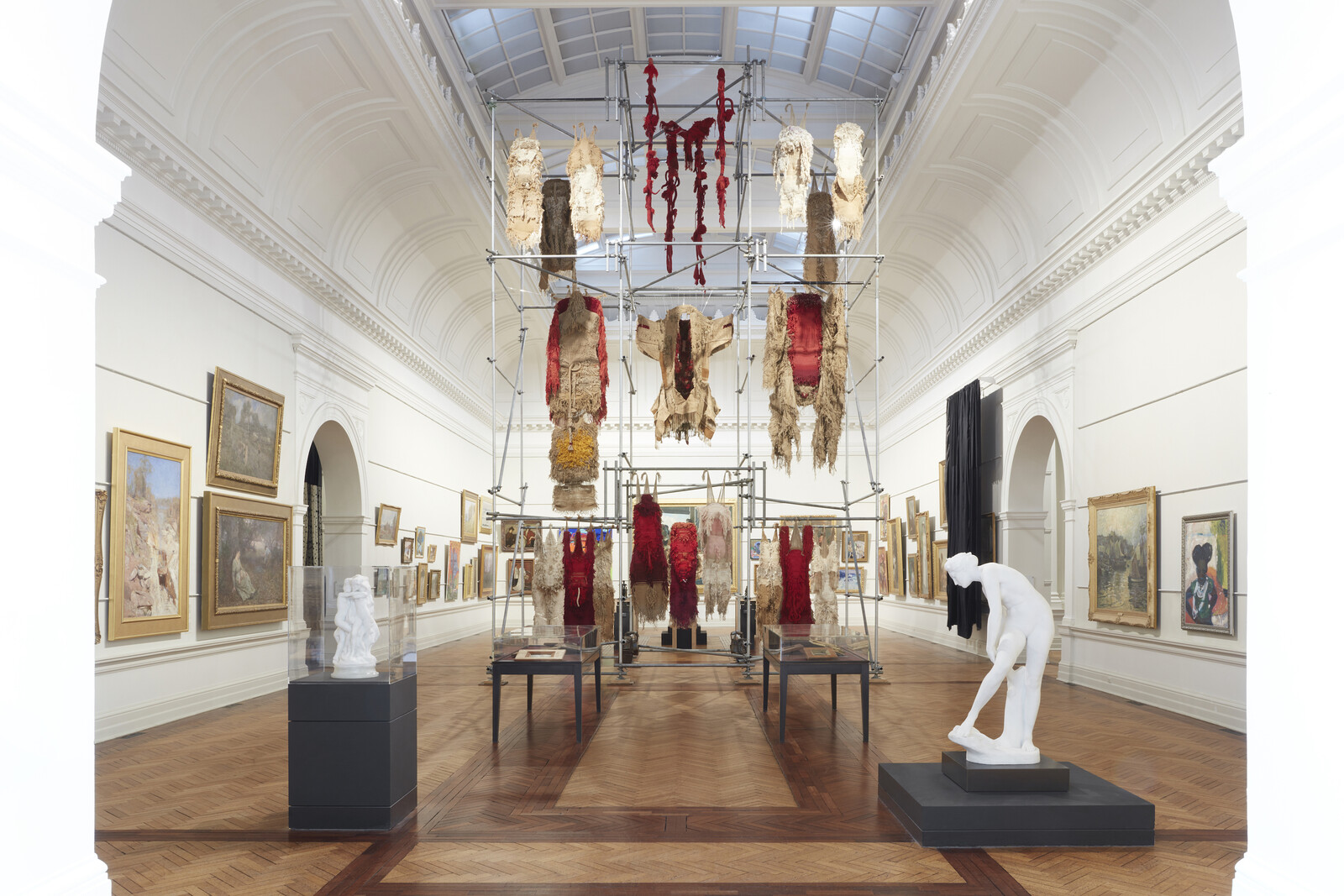Across his practice as an artist and a curator, Brook Andrew develops kinship with non-western cultures rooted in an intersectional understanding of indigeneity. Andrew is of Wiradjuri and Celtic ancestry and was, this year, the first Indigenous artistic director of the Biennale of Sydney since the exhibition’s inception in 1973. In that role, he dealt with a wide range of artistic, community, and activist practices from Indigenous and non-Indigenous backgrounds. Featuring 98 artists and collectives, the exhibition—titled “NIRIN,” meaning “edge” in Wiradjuri—was rooted in a fierce critique of coloniality.
The following conversation explores the possibility of indigenous art as a non-colonial force, one that fractures the idea of history as progress and questions the art-historical canon and the institutions that enshrine it. These themes are evident across Andrew’s research-based artistic practice, in which he engages with themes of colonialism, indigeneity, and historical amnesia in collage, painting, and installation. Something that has always impressed me about his practice is the joy with which he approaches such issues—with care and rigor, and with the soul of someone waiting to be amazed.
Pablo José Ramírez: I’d like to think with and beyond the global crisis by looking back to our past. As you know, I grew up in volcanic Mayan territory, where people get used to the quotidian nature of tremors. If they are at night, instead of rushing to hide under a door or a table, you wait passively in bed and contemplate. Most of the time, the real tectonic movements happen after the initial tremor. I’d like to start by asking how you are at the moment. How do you see your work situated in the present?
Brook Andrew: I grew up swimming in the Hawkesbury River at the base of the Blue Mountains, swimming with galin-dhuliny (poisonous red-belly black snakes) and lots of incredible birds, like the lathami yuyang (red-black cockatoo), garru (magpie), and yibaay (wedgetail eagles). My experience of a “tremor” was the destruction of the ancient ghost gum tree that the lathami yuyang nested in—I saw them nest until my twelfth year but they had been nesting there way before I was born. Then the tremor came—it was devastating for me. I came home from school one day and the sky was clear and there was no long tree shadow. The tree was removed to build a small shopping center. My worldview changed.
Tremors, whether natural or human-made, force us to re-route our journeys, affecting what we see—or don’t, as things remain hidden. When “NIRIN” opened, there was almost too much excitement and visibility. But ten days later, it closed with the lockdown measures. It was a rerouting that felt sudden but very much within an internal familiarity—for me anyway. Indigenous cultures have had to both adapt and survive through invasion and colonization, and understand the reality of being in sync with our environment. Great change is in our blood, in my blood, so it is not so much a shock as a pragmatic shift.
PJR: Colonial memory has made us extremely adaptable and resilient. We could say that Indigenous art has always understood the creative potential of catastrophe. In your statement for “NIRIN,” you speak about unresolved past anxieties related to colonial memory and Indigenous art. Could you expand on this?
BA: Those anxieties are like a knot in your stomach, where something doesn’t feel right, where an issue or event builds and builds and we bury it deeper and deeper. Denial and truth are like siblings that can mix in this knot. The complexity of being open and being able to recognize aspects of humanity that are visible, in balance with those which are shadowed or invisible, is a difficult task. Walking that path can be very confronting. Indigenous peoples and those who have similar philosophies and practices of survival and healing see this challenge but do not always frame it as a negative.
“NIRIN” was one example of engaging with this balance. Humanity is narcissistic, but it cannot rule over nature or the universe. The human mind is a wondrous abstraction; it can create inspiration and joy and it can collaborate and be flexible, but it is also capable of deep ignorance, destruction, and denial. If humanity does not address this knot in its gut, then it will surely self-destruct. This catastrophe, as you name it, can go either way.
Breaking apart the often frozen and conservative western ways of thinking and doing can be the creative step in the journey; the second step is to allow for balance and change. I am constantly checking in with the artists I work with and also being guided by the sites and cultures in which their work and our collaborations occur. I believe in these collaborative spaces as places of healing and change, but also as spaces in which to feel transformed, even if that experience is uncomfortable.
PJR: Many institutions and curatorial discourses are comfortable with Indigenous cultures as long as they can be explained through specifics—always looking at them from a safe distance. Indigenous subjects are localized and depoliticized, while western subjects claim universality as bearers of global civilization: hegemony hides behind a veil of cultural diversity and openness. Indigenous contemporary art, by contrast, is defined by horizontality, intersectionality, friendship, commonality, and cross-fertilization. I’m curious to know how you relate to these distinctions in your practice as a curator and as an artist?
BA: The flattening of Indigenous peoples still continues today. “Looking at them from a safe distance,” as you describe it, means controlling them from the outside. This control of Indigenous art—and the stereotypes of how we are supposed to look, act, and be—is a fear of the West’s own crisis of self-identity. It is an anxiety born from being the younger human-evolved-culture, compared to Indigenous peoples being the oldest living cultures on the planet, and which uses religious and scientific fantasies and lies to create a human division through racism in order to steal and subjugate land for capitalist gain. This is why the West holds back and flattens the Indigenous experience.
For the West to look at itself through Indigenous timelines and eyes is confronting, because our worldview—being in sync with the planet—threatens the bureaucratic systems that uphold dominant powers, not just in the West. I believe that the reluctance to repatriate and restitute Indigenous objects from museums and private collections falls under this gaze, for where would the West be, its culture and museums, without Indigenous objects being imprisoned and held silent?
PJR: The arrogance that some colonial collections display in relation to ancestral Indigenous objects says much about their fragility. What is your take on the debates around Indigenous objects and repatriation?
BA: Indigenous objects—classified as primitive or uncivilized, or as memories of so-called underdeveloped societies—are in fact core aspects of the culture that sustains the West. What would the museums hold and what would their visitors see if there were no Indigenous objects or science to (falsely) prove that Western civilization and its people are superior? The prospect of Indigenous objects being absent and returned or destroyed—disappeared—adds to the fear of looking at themselves, of recognizing that they are playing a dangerous game that has more or less destroyed their own obsessive position as collectors and purveyors of Indigenous longevity and harmony.
This harmony is powerful and confronting because it is the polar opposite of the western system that does not value the environment as an active cultural force. We know how to look after the land both environmentally and spiritually, and the same goes for our care for each other, across the globe. To admit that Indigenous art and cultural objects in museums and continuing cultures today have relevance and power outside the western paradigm leaves the West limp and useless. What is the legacy of this paradigm? Powerful leading societies are failing. Look at modern-day democracies which create more mess than safety, more greed and destruction than kindness.
Importantly, however, there is a fruitful grassroots decolonial movement. Artists such as Elicura Chihuailaf Nahuelpán, a Mapuche Chilean poet and author, remind us of the essential connection between humanity and trees, rocks, animals, and so on. The colonial project strives to destroy this connection—this still continues today, as illustrated by the destruction of a sacred tree at Djab Wurrung in western Victoria earlier this year.
PJR: Could you say something more about the curatorial methodologies you developed in collaboration with the artists for “NIRIN”?
BA: The artists I worked with chose themselves. I was led to them through their emanative creativity and interconnectivity; from an invitation to a dinner to an invitation to visit a community. I responded to connections and vibrations that I felt. Walking through dhuluyanha ngiriyagarra yanhulabul (time) is an important way of life for me. Time itself is a construct, and it is impossible to hold people or the world “in time.” Therefore, I believe that I was guided by a Wiradjuri—my mother’s Aboriginal Nation—pathway.
In my own art practice working with museum collections and displays and creating interventions, I have sought to create space for new “infected” timelines and realities to appear in institutional spaces that are often out of sync with Indigenous ways of life. Sometimes these artworks push against the imposed primitive identity imposed and engage in its dysfunction or open up the fault line deep within this construction. Many of the artworks in “NIRIN” also worked in this way.
A powerful example was Nicholas Galanin’s Shadow on the Land, an excavation and bush burial (2020), which created an archaeological burial site for a statue of Captain Cook that stands in Hyde Park, Sydney. Similarly, the Central/South American Indigenous collective Colectivo Ayllu / Migrantes Transgresorxs created don’t blame us for what happened (2019–20), an immersive installation that took us along a maze created by hundreds of printed and collaged archives with a sand floor at Sydney’s Artspace. There were flashing police lights and videoworks of poetry with trans communities marching and partying in the street. The journey through the maze, which terminated with a sacred Indigenous worship temple, revisited the trauma of the Spanish conquistadors who murdered and whose descendants continue to murder and discriminate. It’s a work that clearly challenges western primitivist and heteronormative practices, exposing them as oppressive excuses for other forms of genocide.
Works like these hold special power amongst the Black, Indigenous, and Trans Lives Matter movements and current environmental catastrophes, bringing together a very different “artworld” in a series of gallery and spatial interventions. Grassroots connections, with Indigenous and like-minded non-Indigenous artists from across the globe, need acknowledgement. It is important for the artworks, artists, communities, and collectives to shine in a way that is expressive and disavows Western sloganeering, as well as quite frankly defunct colonial regimes and their smokescreens of power.
PJR: Western institutions may fear that in repatriating non-western objects to their original lands, they will allow for a non-Western planetary consciousness that debunks the centrality of European history in the making-of-the-world. The challenge they face is how to foreground non-colonial methodologies in art while allowing for a polyphony of Indigenous and non-Indigenous voices, as something more than the sum of its parts—something I call “Indigenous cosmopolitanism.” What’s your response to how art infrastructures are beginning to engage with Indigenous art?
BA: The answer to the mess of misunderstanding between western and Indigenous philosophies lies in a riddle; the abstraction of human thought, complicity, and willpower is the voice that you hear from a tree or the stone that keeps falling at your feet. My own practice relies on anxieties, self-awareness, and possible fear of what lies underneath. Finding joy and playfulness, testing how to confront danger (i.e. the museum), is where I believe the slipstream is. The slipstream into a cave, a cavernous plain, which can twist and defy human perception to reveal something quite different that’s been concealed with heavy burdens of human construct. What I mean here is that the museum can be a den for packing and layering and sorting the remains of other cultures—as proof that their destruction was to save them, a collation of the poor and the damned by a god or a so-called superior human. Playing in this den is dangerous and essential.
